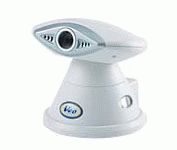|

 |
August 2003 |
Cool news for hot days! |
 |
Falcon Wireless Newsletter |
in this issue

An Introduction to Front-Line US

In preparation for the Homeland Defense Conference, we developed an information resource known as Front- Line US. Initially, the plan was to develop a coordinated communications action plan that would offer a blueprint for use by cities and counties interested both in interoperable communications as well as individual planning for the future. We are pleased to offer an overview of the Front-Line US plan in this newsletter and hope you find it to be useful in your community. As always, if you have any questions, we are as near as your phone, fax, email, or personal visit.
We can't speak for everyone, but it is apparent that the most successful implementation of interoperable communications networks will be based on existing VHF and UHF system technology. These new systems will be backward compatible with what we know today, but with some major improvements.
First, we will see rapid conversion to narrow band 12.5 kHz technology coupled with reasonably priced voice encryption and multi-channel dynamic channel assignments for maximum resource utilization. You will see enhanced mobile communications capability with an affordable vehicle tracking system included in the price of the mobile. Service plans are also included in the price of the equipment for terms of up to five years.
You will learn how to implement a high level of administrative control while simultaneously enhancing the safety of first responders. These new administrative control systems will provide another major benefit known as litigation avoidance. This is a new term to many of us, but as time goes on, it will become more of a major factor in our communications planning. You can learn more about the new Front-Line US system by going to a special web page developed by Falcon Wireless mainly for public safety professionals. In reality, this same technology has similar benefits for commercial and institutional users as well. You can go to this web page now by clicking on the link below.
Click here to go to our Front Line website
Quick Links...
|
| Greetings!
We ended July with a BANG! As an invited vendor to the Homeland Defense Conference in Hoover, Alabama, we were privileged to meet and exchange ideas with a number of public safety professionals ranging from Alabama's largest to smallest cities and counties plus many visitors from other states. This conference, jointly sponsored by the U.S. Attorneys Office of the Northern District of Alabama and the Cities of Bessemer, Birmingham, Homewood and Hoover provided a wealth of information for those charged with our defense. We sincerely thank those who had the vision and foresight coupled with a lot of hard work, to put this event together. We look forward to more events of a similar nature in the future.
In preparation for the Homeland Defense Conference, we developed an information resource known as Front- Line US. Initially, the plan was to develop a coordinated communications action plan that would offer a blueprint for use by cities and counties interested both in interoperable communications as well as individual planning for the future. We are pleased to offer an overview of the Front-Line US plan in this newsletter and hope you find it to be useful in your community. As always, if you have any questions, we are as near as your phone, fax, email, or personal visit.
|
Introducing MuniComm!
 The need for all government and support agencies to be able to communicate with each other in an emergency is a major element of Homeland Defense planning. As the requirements were reviewed, it was very apparent that there were two levels of communications infrastructure. The need for all government and support agencies to be able to communicate with each other in an emergency is a major element of Homeland Defense planning. As the requirements were reviewed, it was very apparent that there were two levels of communications infrastructure.
The highest level of communications infrastructure is the equipment and systems used by first responders (fire, police, and rescue) followed by what we call second tier communications. This term defines the systems operated by those who are not first responders but who function in a support or secondary role. This includes general administration, golf courses, parks, & recreation, public housing, schools, streets & sanitation, and utility departments.
These second tier user needs can generally be met with lower cost communications facilities. We developed the MuniComm system to specifically address the needs of these users. Additional information is available by clicking on the link below. Check it out. If you have been putting off the purchase or replacement of a second tier public safety or commercial radio system, check this out. You are in for a very pleasant surprise!
Click here for more information! »
|
|
New Emergency Alerting Plan
 We received a call the other day from the Mayor of a southern Alabama city wanting to know if we sold weather alerting sirens. Within a number of days, we received a call from a fire chief of another Alabama city who wanted to purchase a radio paging system as an alternative to a siren they were using to alert volunteers. We received a call the other day from the Mayor of a southern Alabama city wanting to know if we sold weather alerting sirens. Within a number of days, we received a call from a fire chief of another Alabama city who wanted to purchase a radio paging system as an alternative to a siren they were using to alert volunteers.
This makes you wonder why an outdoor siren would work for alerting the general population when the same siren will not work in alerting volunteer firemen in a very small community. Go figure!
Anyway, from all of that, we concluded that there had to be a better way - both from the standpoint of alerting the greatest number of people at a high level of efficiency and at minimal cost. We further concluded that severe weather alerting was just one element of an efficient public alerting system. We felt that chemical spills, road closings, and other disruptions to our normal routines were of equal importance.
The result of all this thinking turned out to be a system called the C.A.P. (Community Alerting Program). You can learn more about C.A.P. by clicking on the link below. Check it out - it could work in your community!
Click here for more information »
|
|
New Mobile Data Terminal
 The cost of a mobile data terminal (MDT) can vary from under a thousand dollars to five thousand dollars or more and that doesn't include software or peripheral devices such as vehicle tracking or in car cameras. Actually the cost of a mobile data terminal must be addressed by considering all the elements that make up an MDT system. The cost of a mobile data terminal (MDT) can vary from under a thousand dollars to five thousand dollars or more and that doesn't include software or peripheral devices such as vehicle tracking or in car cameras. Actually the cost of a mobile data terminal must be addressed by considering all the elements that make up an MDT system.
To assist you in planning the implementation of MDT services, we have prepared a useful guide that addresses each component, what it does, what it costs, and how it works. We think you will find this information useful. We have long taken the position that Sprint data services offer the best value where these services are available. However, we recognize that other services and products may meet our users expectations and for that reason we are now offering the DataLux Tracer terminal that has compatibility with other products and services including a new radio modem for use on private systems. The cost for this radio modem is less than five hundred dollars!
We also recognize that the cost of technology can get out of hand and in many instances a prospective user is faced with making a choice of whether to purchase an MDT or an in-car camera. With the typical in-car camera system costing thirty five hundred dollars or more, we understand the problem. That is why we are offering the Cyclops camera as an option to the DataLux terminal at a cost of under three hundred dollars!
Before telling you more about Cyclops, may we suggest that you first click on the link below for more information on MDT's.
Click here for more information on MDT's »
|
|
New Cyclops Remote viewing system
 Cyclops is a proactive proposed joint venture between participating communities and local area merchants. The objective is to reduce losses attributable to burglary and vandalism of unattended premises while simultaneously adding a level of safety for law enforcement officers responding to burglary calls. Cyclops is a proactive proposed joint venture between participating communities and local area merchants. The objective is to reduce losses attributable to burglary and vandalism of unattended premises while simultaneously adding a level of safety for law enforcement officers responding to burglary calls.
This incredible techlogy allows government and business to work together in reducing the high cost of crime. We have a camera set up in our office that you can view over the Internet 24/7.
Want to know more? We have a camera set up in our office for viewing via the Internet. If you would like the IP address, just give us a call locally at 205.854.2611 or 1.800.489.2611 nationwide. If you prefer, email us - sales@falconwireless.net. We will also send information to show you how easily you can set up the Cyclops program in your community.
Click here for more information. »
| |
 |
email: sales@falconwireless.net
voice: 2058542611 | |
|
